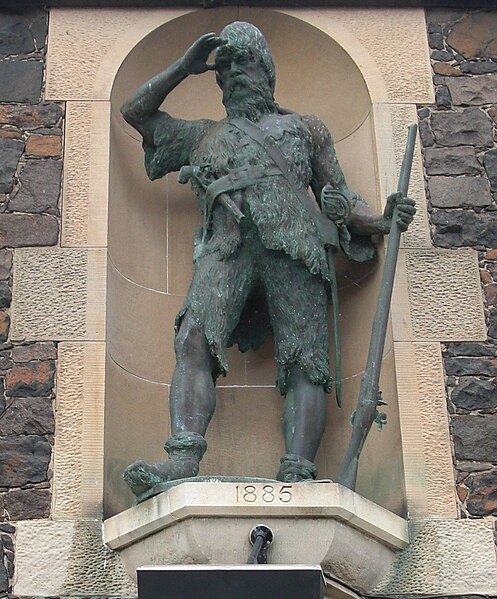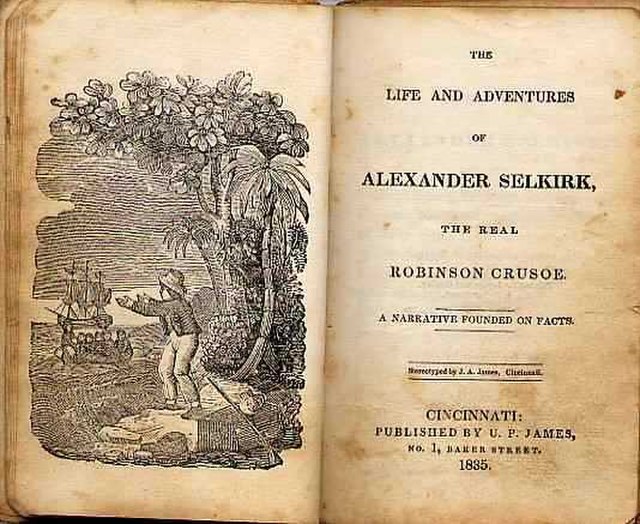Alexander Selkirk was a Scottish privateer and Royal Navy officer who spent four years and four months as a castaway (1704–1709) after being marooned by his captain, initially at his request, on an uninhabited island in the South Pacific Ocean. He survived but died from tropical illness years later while serving as a lieutenant aboard HMS Weymouth off West Africa.
Clad in goatskins, Selkirk awaits rescue in a sculpture by Thomas Stuart Burnett (1885)
The rescued Selkirk, seated at right, being taken aboard Duke.
An illustration of Crusoe in goatskin clothing shows the influence of Selkirk
Title page from The Life and Adventures of Alexander Selkirk, the Real Robinson Crusoe (1835), by an unknown author
Marooning is the intentional act of abandoning someone in an uninhabited area, such as a desert island, or more generally to be marooned is to be in a place from which one cannot escape. The word is attested in 1699, and is derived from the term maroon, a word for a fugitive slave, which could be a corruption of Spanish cimarrón, meaning a household animal who has "run wild". Cimarrón in turn may be derived from the Taino word símaran (“wild”), from símara (“arrow”).
Marooned by Howard Pyle





